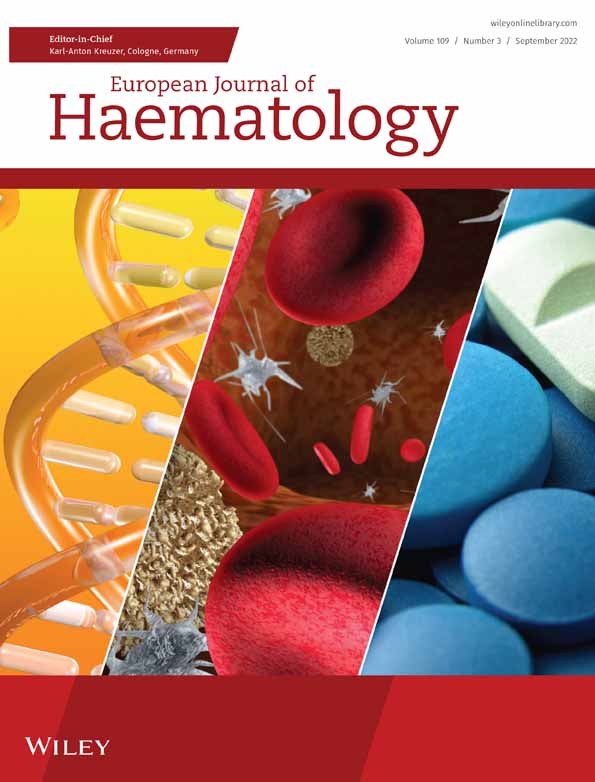Cell-free DNA levels are increased in acute graft-versus-host disease
A. Kroeze and A. S. Cornelissen are first authors, M. F. Pascutti and M. Verheij are second authors, and C. Voermans and Sacha S. Zeerleder are senior authors.
Funding information: Landsteiner Foundation for Blood Transfusion Research, Grant/Award Numbers: 1101, 1719; Sanquin Research, Grant/Award Number: PPOC 13-027
Abstract
Background
Cell-free DNA (cfDNA) and nucleosomes, consisting of cfDNA and histones, are markers of cell activation and damage. In systemic inflammation these markers predict severity and fatality. However, the role of cfDNA in acute Graft-versus-Host Disease (aGvHD), a major complication of allogeneic hematopoietic stem cell transplantation (HSCT), is unknown.
Objective
The aim of this study is to investigate the role of cfDNA as a marker of aGvHD.
Methods
We followed nucleosome levels in 37 allogeneic HSCT patients and an established xenotransplantation mouse model. We determined the origin of cfDNA with a species-specific polymerase chain reaction.
Results
In the plasma of aGvHD patients, nucleosome levels significantly increased around the time of aGvHD diagnosis compared to pretransplant, concurrently with a significant increase of known aGvHD markers ST2 and REG3α. In mice, we confirmed that nucleosomes were elevated during clinically detectable aGvHD. We found cfDNA to be mainly of human origin and to a lesser extent of mouse origin, indicating that cfDNA is released by (proliferating) human xeno-reactive PBMC and damaged mouse cells.
Conclusion
We show increased cfDNA both in an aGvHD mouse model and in aGvHD patients. We also demonstrate that donor hematopoietic cells and to a lesser degree (damaged) host cells are the cellular source of cfDNA in aGvHD. We propose that nucleosomes and cfDNA might be an additive marker for aGvHD.
CONFLICT OF INTEREST
The authors declare no competing financial interests.
Open Research
DATA AVAILABILITY STATEMENT
The original data of this study are available on reasonable request from the corresponding author.




